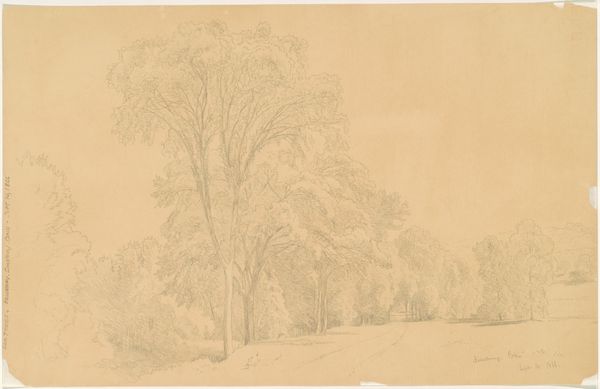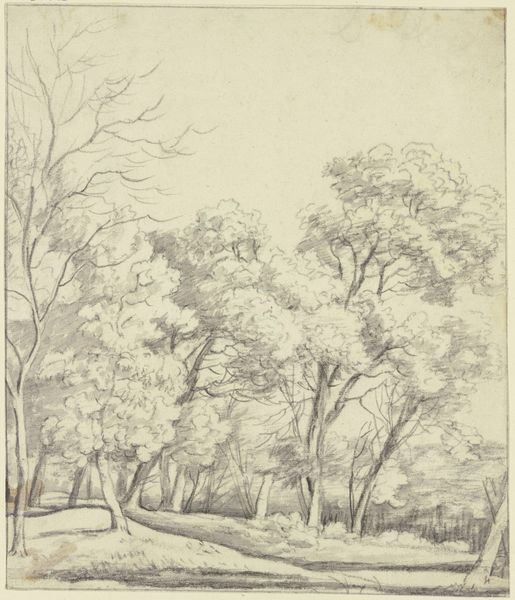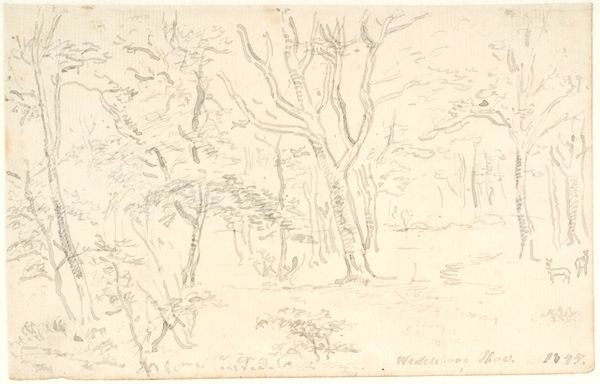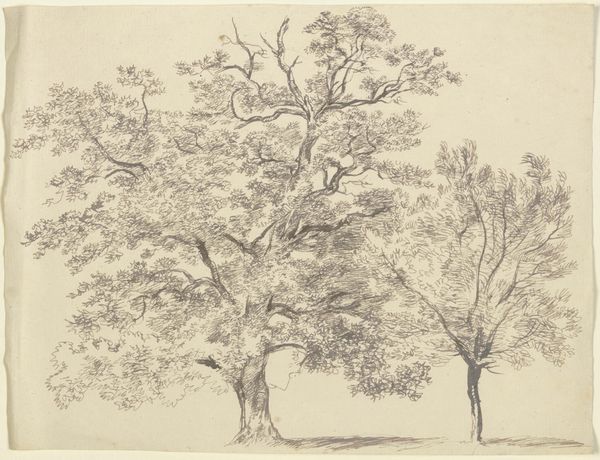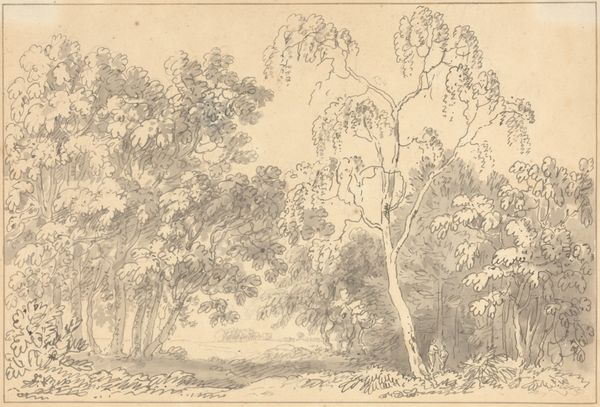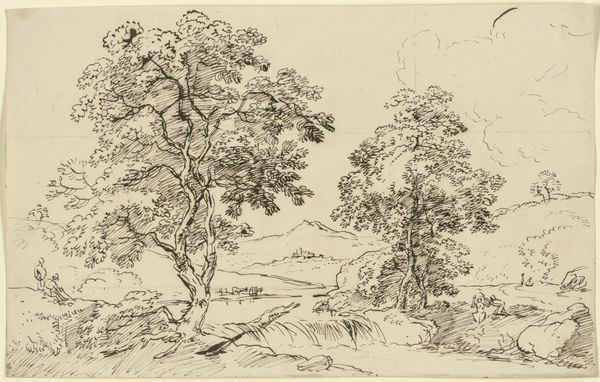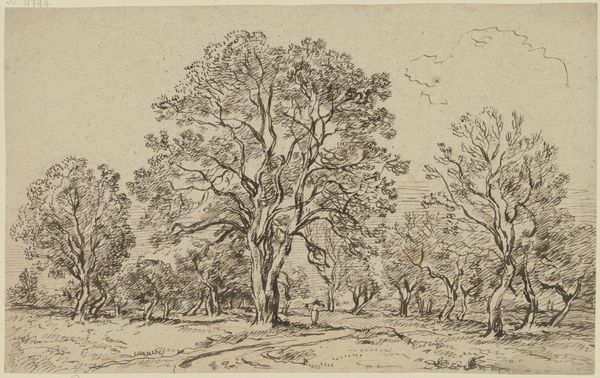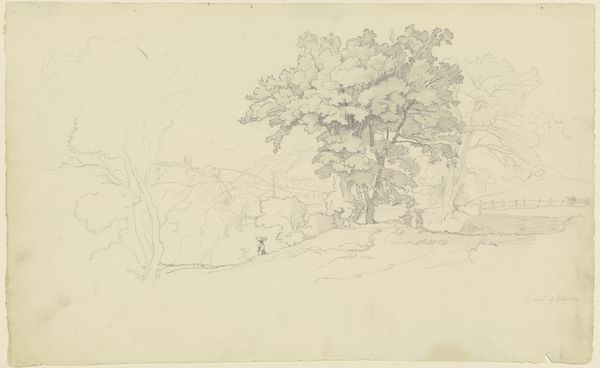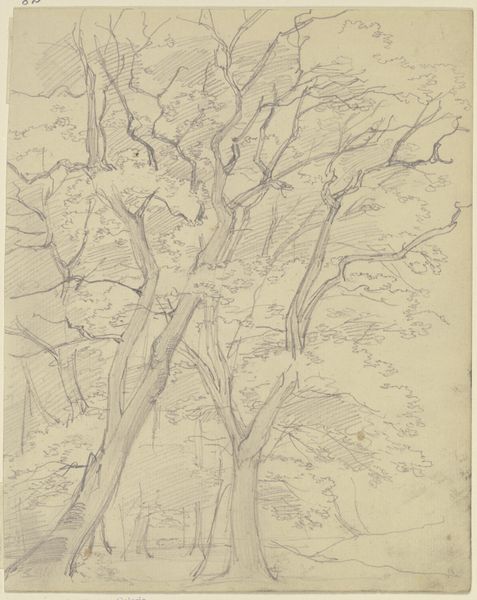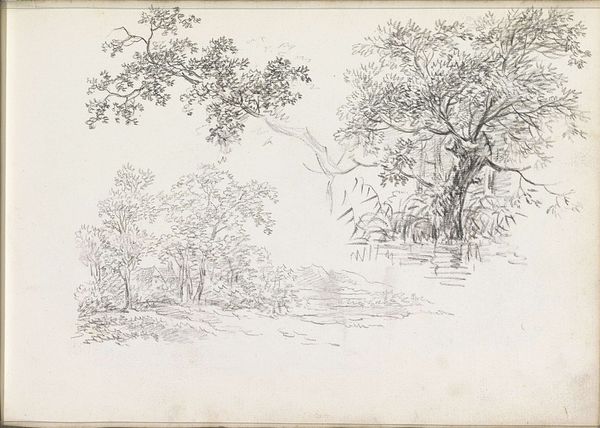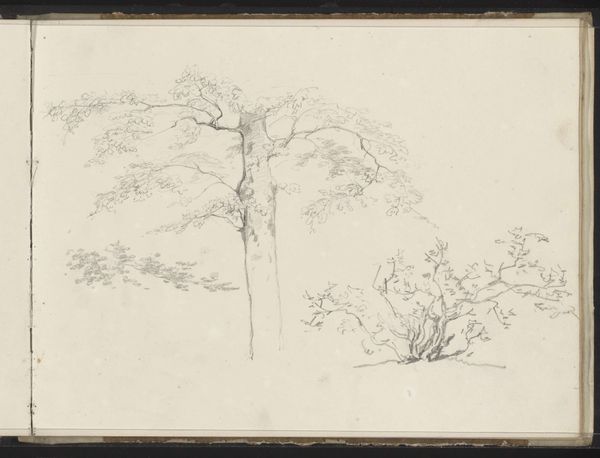
drawing, pencil
#
drawing
#
landscape
#
pencil
#
realism
Dimensions: 135 mm (height) x 237 mm (width) (bladmaal)
Curator: Good morning. We're standing before P.C. Skovgaard's 1873 pencil drawing, "Parti fra Knabstrub Dyrehave," housed here at the SMK, the Statens Museum for Kunst. Editor: A remarkably understated piece, wouldn't you agree? Its subdued palette and seemingly simple composition exude a serene, almost melancholic atmosphere. The textures are subtly defined by pencil. Curator: I’m struck by the artist’s evocation of a specifically Danish landscape, a locale weighted with cultural memory. Forests often represent the deep-rootedness of a nation's history and the collective unconscious. The 'dyrehave', or deer park, brings a sense of the hunt, the primal connection to the land, now domesticated, contained. Editor: I'm particularly intrigued by how Skovgaard uses line to create volume. The varying densities of graphite form a complex tonal range, giving the trees solidity and weight without sacrificing delicacy. Notice how the network of branches intertwines, creating these abstract patterns of light and shadow. Curator: Yes, these forests, or at least our image of them, were instrumental in defining Danish Romantic nationalism in the 19th century. Skovgaard himself played a key role. Remember that the historical period emphasized authenticity rooted in landscape. So even a simple sketch carries heavy meaning. It is a portrait of an authentic Danish spirit. Editor: I see. It seems almost to me that he is stripping away the nonessentials in order to study the basic architecture of this particular type of the natural landscape. A subtle formal experimentation occurs through his close observation. Curator: And within that perceived simplicity, Skovgaard reveals something elemental. The very act of sketching, capturing this scene *en plein air*, imbeds a powerful immediacy. This act becomes part of the artwork itself. It embodies cultural identity. Editor: I leave with a new sense of the interplay between restraint and complexity in this modest, but rich artwork. Curator: Indeed. Skovgaard’s rendering truly bridges national identity, collective consciousness, and individual expression.
Comments
No comments
Be the first to comment and join the conversation on the ultimate creative platform.
